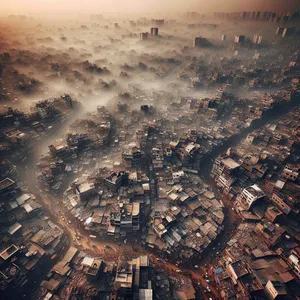Deciphering the Roots: Understanding India's Air Pollution
The genesis of air pollution in India is a complex weave of factors including vehicular
emissions, industrial activities, and agricultural practices. Urbanization and the rapid
increase in population density exacerbate the situation, leading to a deterioration of air
quality and posing severe health risks to the populace.
Air pollution in India represents a critical environmental challenge that has surged to the
forefront of public and governmental attention. With cities shrouded in smog, the country's
air quality has reached perilous levels, posing grave health risks and economic
implications. This section explores the multifaceted aspects of air pollution in India,
including its causes, impact, and the countermeasures being deployed to tackle the issue.
Firstly, the primary contributors to air pollution include vehicular emissions, industrial
discharge, and crop burning. These activities release a plethora of harmful pollutants, such
as particulate matter (PM2.5 and PM10), nitrogen dioxide, and sulfur dioxide, into the
atmosphere. The health implications are dire, with studies linking poor air quality to
respiratory problems, heart diseases, and premature mortality. Economically, the cost of air
pollution in India is staggering, reducing GDP growth and burdening the healthcare system.
Recognizing the severity of the crisis, the Indian government and various NGOs have
initiated several interventions. Policies such as the National Clean Air Programme (NCAP)
aim to reduce particulate matter concentrations by 20-30% by 2024. Technological solutions,
like air purifiers and pollution monitoring apps, have also gained traction among the urban
populace. Additionally, international cooperation, as seen in partnerships with countries
like the United States for technological exchange and research, plays a pivotal role in
addressing the issue. Public awareness campaigns and community-based initiatives further
underscore the collective effort required to mitigate air pollution. Despite these efforts,
challenges such as enforcement of regulations, urban planning, and sustainable development
remain formidable hurdles. Addressing India's air pollution crisis necessitates an
integrated approach, blending policy enforcement, technological innovation, and community
engagement to pave the way for cleaner, healthier air.
Explore More
India's battle against air pollution is an ongoing struggle, demanding an amalgamation of
policy, innovation, and community involvement. Recognizing the urgency and acting with
resolve can lead us to breathe cleaner air, ensuring a healthier future for the next
generations. The path is challenging but surmountable with collective effort and sustained
commitment.
